The following lists recently published books of relevance to the chemical process industries (CPI):
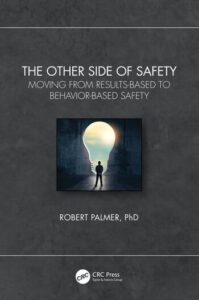
The Other Side of Safety: Moving from Results-Based to Behavior-Based. By Robert Palmer, CRC Press, 2023, 154 pages, $71.96.
A New Approach to HAZOP of Complex Chemical Processes. By Fabienne-Fariba Salimi, Ali Akbar Safavi, Leonhard Urbas and Frederic Salimi, Elsevier Press, 2023, 262 pages, $127.50.
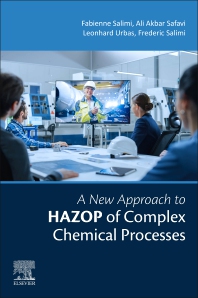
Safety and Health for Engineers, 4th edition, By Roger Brauer, John Wiley and Sons Inc., 2022, 672 pages, $120.00.
Guidelines for Revalidating a Process Hazard Analysis, 2nd edition. By the Center for Chemical Process Safety, 2022, 240 pages, $120.00.
Sulfuric Acid Digestion, Sulfuric Acid Baking, and Sulfation Roasting in Mineral and Chemical Processing, and Extractive Metallurgy. By Francois Cardarelli, Electrochem Technologies & Materials Inc., 2023, 279 pages, $123.22.
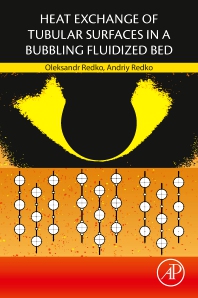 Heat Exchange of Tubular Surfaces in a Bubbling Fluidized Bed. By Oleksandr Redko and Andriy Redko, Academic Press, 2023, 286 pages, $180.00.
Heat Exchange of Tubular Surfaces in a Bubbling Fluidized Bed. By Oleksandr Redko and Andriy Redko, Academic Press, 2023, 286 pages, $180.00.
Hydrogen Embrittlement Theory and Prevention of Hydrogen Damage in Metals and Alloys. By Branko Popov and Milos Djukic, Elsevier Press, 362 pages,
Guidelines for Managing Abnormal Situations. By the Center for Chemical Process Safety, 2022, 272 pages, $120.00.
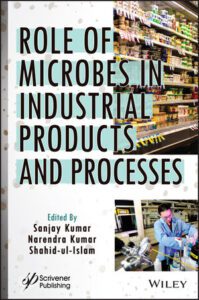
Role of Microbes in Industrial Products and Processes. Edited by Sanjay Kumar, Narendra Kumar and Shahid Ul-Islam, John Wiley and Sons Inc., 2022, 432 pages, $180.00.
MSA Gas Detection Handbook, 9th edition. By MSA Safety Inc., self-published, 2022, 155 pages.
Data Science for Engineers. By Raghunathan Rengaswamy and Resmi Suresh, CRC Press, 2022, 360 pages, $96.00.
Process Steam Systems: A Practical Guide for Operators, Maintainers, Designers and Educators, 2nd ed., John Wiley and Sons Inc., 2022, 368 pages, $96.00.
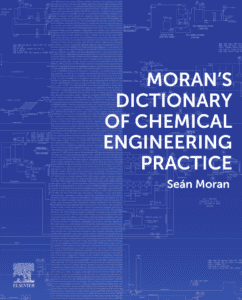 Moran’s Dictionary of Chemical Engineering Practice*. By Sean Moran, Elsevier Press, 2022, 650 pages, $153.00.(*See Author’s Commentary about the writing of this book below)
Moran’s Dictionary of Chemical Engineering Practice*. By Sean Moran, Elsevier Press, 2022, 650 pages, $153.00.(*See Author’s Commentary about the writing of this book below)
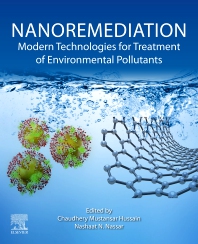 Nanoremediation: Modern Technologies for Treatment of Environmental Pollutants. Edited by Chaudhery Hussain and Nashaat Nassar, Elsevier Press, 2023, 662 pages, $199.75.
Nanoremediation: Modern Technologies for Treatment of Environmental Pollutants. Edited by Chaudhery Hussain and Nashaat Nassar, Elsevier Press, 2023, 662 pages, $199.75.
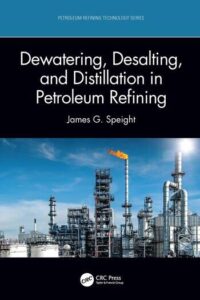 Dewatering, Desalting, and Distillation in Petroleum Refining. By James Speight, CRC Press, 2023, 270 pages, $160.00.
Dewatering, Desalting, and Distillation in Petroleum Refining. By James Speight, CRC Press, 2023, 270 pages, $160.00.
Author’s Commentary
The following comes from the author Sean Moran about the publication of his book “Moran’s Dictionary of Chemical Engineering Practice.”
Why Do We Need a Dictionary of Chemical Engineering Practice?
By Sean Moran
What is a squing? How about a schoepentoeter? Do you know the difference between a roughneck and a roustabout? A silo and a hopper? How many ‘colors’ of hydrogen have you heard of? How many definitions of the word color? What’s the difference between availability, dependability, and reliability? And, if you think that you already know, are you aware of how meanings vary between – and even within- industry sectors?
I have been writing about engineering, for engineers, for over a decade now. A key issue I have observed in writing is that a great deal of poor communication among engineers arises primarily because we use the same terms to mean different things, and different terms to mean the same things. Each of my books has needed a glossary to explain the sense in which I was using a term.
A related difficulty is that many engineers will insist that their preferred meaning for a term is the only correct one. But, if the sole purpose of using terms is to unequivocally transmit meaning, (as so many engineers think it is), then this makes no sense. Only a term with a definition agreed by all parties can truly serve to precisely transmit information. This was the primary reason for deciding to write my latest book, Moran’s Dictionary of Chemical Engineering Practice: to improve communication between engineers.
Some important terms used in engineering are defined normatively in codes, standards and guidance documents. This certainly decreases the possibility of misunderstanding if explicit reference is made to the definition source, but it rarely is, and the use of such documents varies geographically and by sector.
Contested terms
Many engineers work in one sector or one geographical area for their whole careers. Only when they mix with engineers from elsewhere do they find their definitions of terms challenged. Many have gotten quite angry with me simply for stating that in other places or settings, such and such a term has a different meaning, either informally, or through formal definition.
To give a concrete example, let’s consider the term “hazard.” While legislation may provide slightly different definitions depending on the jurisdiction, a hazard (generally speaking) is a source of potential damage to people, property or environment, and is thus closely associated with risk. The meaning of hazard may however be restricted in the engineering profession to potential sources of harm. Most people agree that harm is something that happens to people, whilst damage is something which happens to property; and a formal definition along these lines may be found in BS EN ISO 12100:2010.
The hygienic industries tend to define hazard entirely in the context of food safety (the EHEDG Glossary being a key resource in this respect). Process safety (and therefore consideration of damage and harm to people other than consumers) can therefore tend to be a lesser priority than food safety, to the extent that HACCP studies may be believed to render HAZOP studies redundant.
In the oil and gas industry, on the other hand, the American Petroleum Institute (API) is the standard bearer. But API’s definition of hazard in RP2001 seems to imply that a hazard is either a property inherent to a material which can cause harm; or the process conditions which can lead to harm. API differentiates hazard from risk in the standard; risk being the potential for exposure to hazard.
To complicate matters further, process plants may well be located in one regulatory area but need to conform to another (for example in the pharmaceutical industry, in which plants, wherever they are located in the world, must manufacture to U.S. Food and Drug Administration (FDA) and/or European Medicines Agency (EMA) standards). Likewise, in the oil and gas industry, both local and end-user regulation may need to be followed, so understanding what a fellow engineer means when they are discussing hazard can become critical.
The term “risk” is itself heavily contested: the International Organization for Standardization (ISO; www.iso.org) alone has 140 different definitions of the term in its standards. Other organizations offer yet further definitions. Given the everyday nature of this term in professional life, and the potential consequences of misunderstandings, this should be a matter of concern for practitioners.
Then there are terms with distinctly slippery definitions due to their political currency. Terms such as “waste”, “sustainability” and “net zero” have a wide range of meanings, from those explicitly and measurably defined in sets of metrics such as the AIChE Sustainability Index (though there are quite a few other sets of metrics on offer) through those from more extreme political agendas requiring, as a first step towards sustainability, the overthrow of capitalism. A 2007 report for the USA Environmental Protection Agency summed up the issue rather well: “While much discussion and effort has gone into sustainability indicators, none of the resulting systems clearly tells us whether our society is sustainable. At best, they can tell us that we are heading in the wrong direction, or that our current activities are not sustainable. More often, they simply draw our attention to the existence of problems, doing little to tell us the origin of those problems and nothing to tell us how to solve them”.
Location, location, location
In addition to differences between industry sectors, there are also geographical differences in how engineering terms are used. There are differences in usage between American and British English. My publisher, Elsevier, uses US English as its publishing standard so this was the basis for my manuscript, but I have nonetheless referenced British and more “International” English terms where there is a possibility of confusion.
An interesting case in point revolves around the cluster of terms related to the concept of “clean.” In the dictionary, I define clean as “sufficiently free of contaminants for the intended purpose.” In chemical engineering, making things “clean enough” can be divided into three levels: cleaning, disinfection, and sterilization.
Cleaning is “The removal of objectionable matter”, to summarize the formal definitions in codes and standards; it reduces the number of contaminants, thus removing a proportion of organisms present. Cleaning could be as simple as wiping off dirt, but if we are making a product for human consumption, then we need to consider the nature of that ‘dirt’. Contaminants is a better word in my view than dirt, evocative of the US FDA’s requirements for cleanliness of food and drug processing equipment, which is why I use it in my definition of “clean”.
Cleaning may be sufficient for the removal of many physical contaminants, such as living or dead organisms, FOGs, etc., and some items are perfectly safe to consume if they are clean. Others, however, are treated with disinfection, which removes most pathogenic organisms; or even sterilization – the killing or removal of all organisms.
Disinfectant is a word used in British English to mean something close to the US English “sanitizer”, but the (European) EHEDG define disinfectant more broadly, bringing in the concepts of food safety, sanitizing and sanitation (which is given as a synonym of hygiene); hygiene, in turn, references food hygiene.
As for the terms hygienic and sanitary, are these synonyms for clean, near synonyms, or is one of them deprecated? In industries effectively regulated by the US FDA there is some evidence that these terms are interchangeable – see for example NSF International’s standards for this US view and compare with the EHEDG glossary for the European view, giving sanitization and sanitary as deprecated terms from the USA, preferring disinfection and disinfectant.
In the pharmaceutical industry however, while the EHEDG guidance has applicability, the ISPE glossary defines hygienic design more explicitly than EHEDG, evoking the concept of good engineering practice(s) and flagging the key associated design considerations. As for sanitary design, the ISPE glossary states that it is a misnomer for hygienic design, and no longer in use. They think this usage is not just deprecated; it is wrong.
In summary, these terms are not absolute in nature, but their use can have subtle differences depending on location as well as industry sector. I have learned that engineers in the food and pharma industries in particular should define and where possible quantify such terms in context, so that they can understand and validate compliance with a given specification.
Compiling Moran’s Dictionary of Chemical Engineering Practice has taken three and a half years of my time, and the input of hundreds of other professional engineers. I am confident that the end result is the best possible reflection of the language of our profession, and how we practice chemical engineering today, wherever we are.